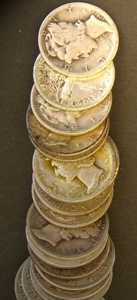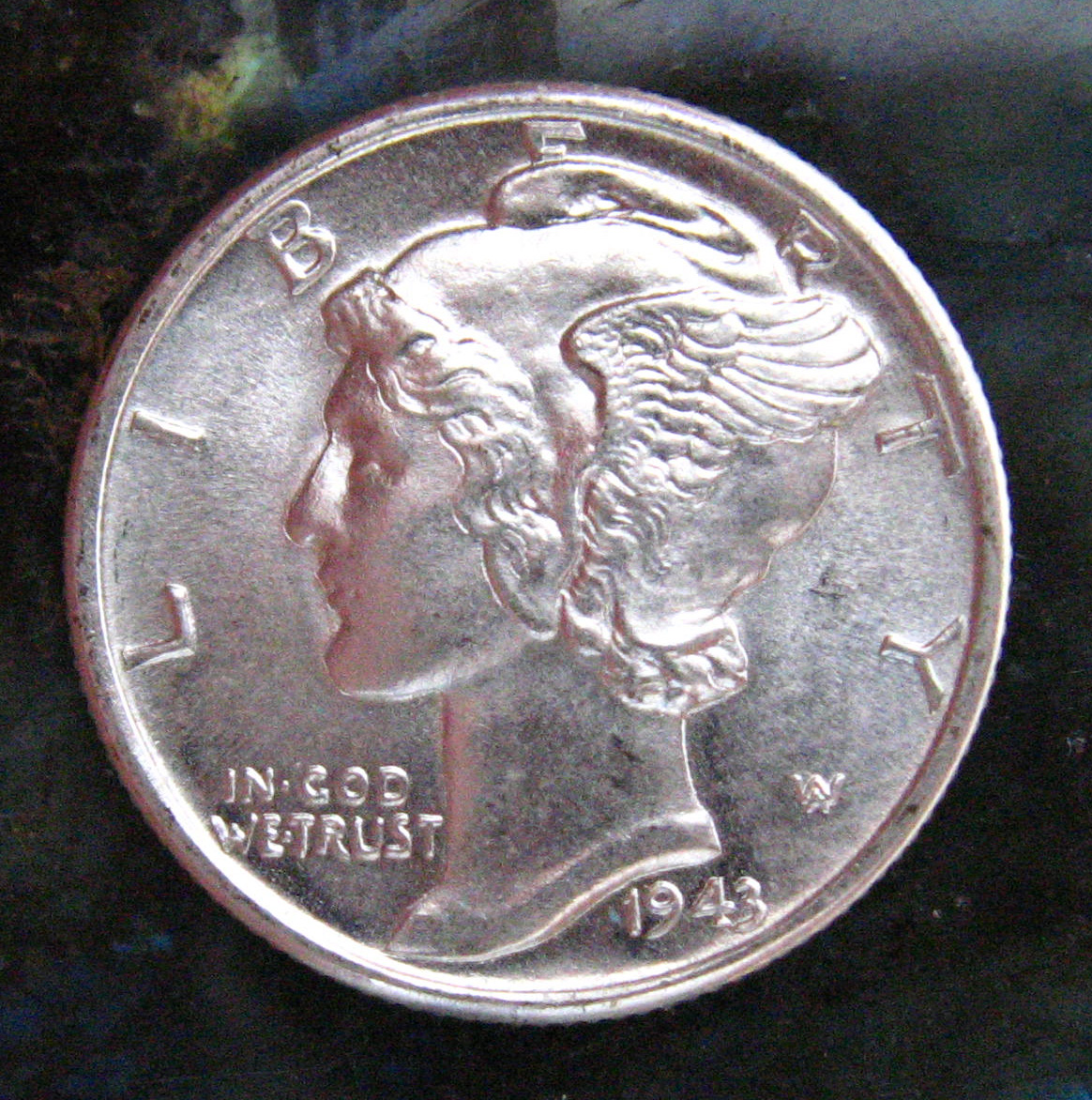By 1915 the Barber coinage had worn thin on the American public. Never viewed as especially beautiful, the design dominated the Half Dollar, Quarter, and dime series. 1916 witnessed three new beautiful designs: The Walking Liberty Half Dollar, the Standing Liberty Quarter and the Winged Liberty Dime. The Winged Liberty Dime, the official name for the coin, soon moved over for the moniker ‘Mercury Dime’. The American Public, which immediately loved the coin, thought that the young figure of Liberty on the front (obverse) looked like a fine representation of the roman god Mercury due to the wings in his cap. The nickname ‘Mercury Dime’ stuck. Noted sculptor Adolph A. Weinman designed both the Winged Liberty Dime and the Walking Liberty Half Dollar. Weinman studied under Augustus Saint-Gaudens who created arguably one of the most beautiful coins in history – the Saint-Gaudens $20 Gold coin.
On the Front (Obverse) A young Liberty faces left with her hair pulled under a winged cap; this is the image which invokes image and impression for the winged god Mercury. The mottos “Liberty” and “In God We Trust” also grace the coin’s obverse. On the Back (Reverse) The olive branch in the background represented American’s yearning for peace, or isolationist stance as some believed. The two together pointed the portrait of a nation that wanted a peaceful existience but was not afraid to project force when necessary. Reverse inscriptions on the coin are the typical “United States of America”, “E Pluribus Unum”, and “One Dime”.
|
|---|


